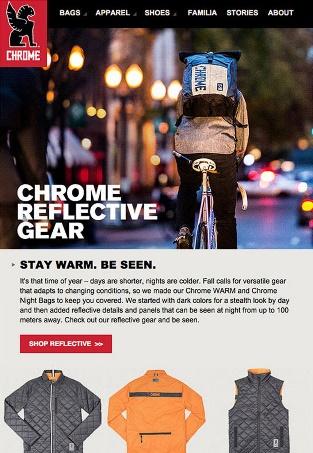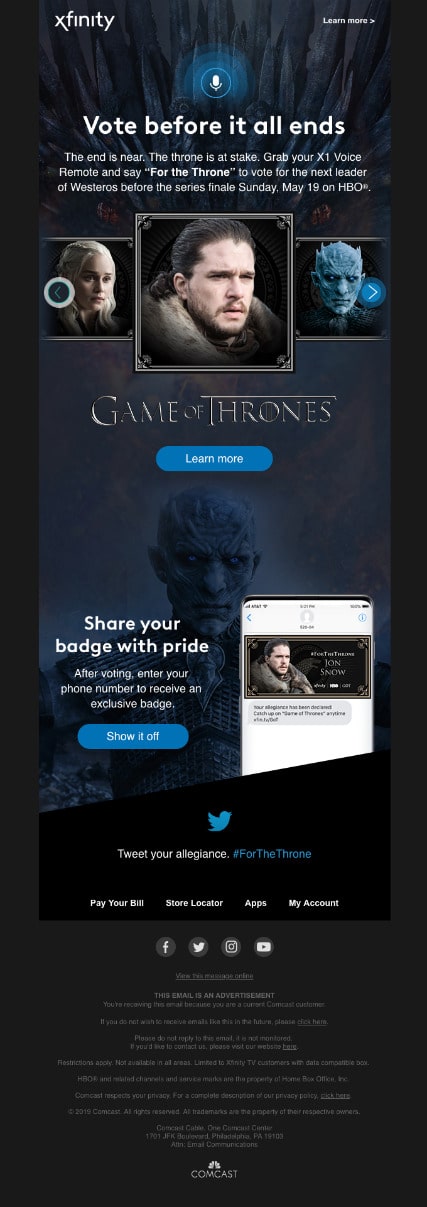A modern take on how to measure email marketing ROI
Return on investment (ROI) is very a hot topic in the world of email. Modern marketing is always evolving, and everyone wants to see the greatest return for their efforts. What email metrics are important? What can you do to make future campaigns a success?
We’re here to help. Check out the tips below to see how you can use data to keep your content relevant and effective - now and going forward.
How to calculate ROI
Your ROI measures the value and performance of your email marketing. Calculate your ROI by comparing the amount you spend on your campaign to the amount of revenue you bring in. The most basic formula is “gained – spent/spent = ROI.” The final number is a percentage.
Email marketing offers an excellent ROI on average, which can be as high as 4,400 percent. That means for every dollar you spend on your email marketing campaign, you can see a return of up to $44. Of course, this is an average, and some campaigns could go even higher–while others might have a much lower ROI.
Learn how to measure the email marketing ROI that is most useful to you. Those metrics are dependent on the goals you identify for your marketing campaign. You may have a variety of purposes for each campaign. Some of those goals might include:
- An increase in your leads
-
A boost in your brand awareness
-
More traffic driven to your website
Today, you can track even more variables through advanced automation. With this information, you can calculate ROIs with precision and customize campaigns to get the best results.
10 metrics to measure
Your key performance indicators (KPIs) help you create effective email marketing campaigns. Consider these metrics when learning how to measure email marketing ROI:
1. Open rate
Your open rate shows how many people open your email versus how many emails you send. This number determines whether your campaigns are performing well or whether you want to revisit your strategy. The average open rate for email campaigns is over 24 percent, and that rate fluctuates by industry. For example, non-profits see higher average open rates than the retail sector.
Source: Really Good Emails
You can increase your open rate by personalizing your subject line. Some studies have found that adding your recipient’s name in the subject line could increase open rates by as much as 26 percent.
2. Open by device rate
More than 40 percent of all emails are now opened on mobile devices. Looking at your open rates by device will tell you if your campaigns, and the templates you’re using, are mobile-friendly.
Design emails that can be opened on both desktops and mobile devices. But email marketing isn’t one-size-fits-all, so pay attention to what your customers use and customize your campaigns accordingly. A handy tip: Most customers open emails on desktops during the week–but on weekends, they turn to their phones.
3. Bounce rate
Bounce rates show how many of your emails aren’t delivered to your subscriber’s inboxes. They also tell whether problems are temporary or permanent so you can make changes.
Another tip: Requesting a double opt-in from a new subscriber can lower your bounce rate. A double opt-in asks subscribers to confirm their email address so emails are less likely to bounce due to spelling errors.
4. Spam rate
In an ideal world, your emails would never be marked as spam. But it happens - and if you rack up a number of spam complaints, your email service provider might block your account. Look for reasons why these complaints occur. Maybe it’s a technical error, or a word in your subject line.
5. Click-through rate
Want to know if people are clicking links in your emails? Check your click-through rates. Averages range from just over one percent to under five. Non-profits usually see two and a half percent, while retail sees only slightly lower numbers.
Source: Campaign Monitor
Improve click-through rates by including clear and prominent CTA buttons throughout your email. Try putting one in the center of the page and in a contrasting color. Surround your CTA with enticing images and content that make your subscriber want to learn more.
6. Unsubscribe rate
Sometimes people choose to say sayonara to your emails. According to Smart Insights, unsubscribe rates are as low as .13 percent for government offices and .40 percent for websites related to photos and video. Non-profits rate around .20 percent, while restaurants hover at .28 percent.
If your unsubscribe rates are higher than average, take a second look at your campaign. Could the writing be improved? Could you be sending too many emails? People want content that is relevant and valuable–and they want it in a cadence that works for them. Test your emails to see why people might be opting out.
7. List growth rate
No matter how well you manage your unsubscribe rate, if you never grow your subscriber list your emails will have trouble performing long-term. Ideally, you want to see steady growth with each campaign.
To calculate your list growth rate, follow this formula:
- Subtract unsubscribers from new subscribers.
- Divide that by the total number of email addresses on your list.
- Then, multiply by 100 to get a percentage.
To keep your number of subscribers on the uptick, you’ll want your list growth rate to surpass your unsubscribe rate. If your numbers aren’t showing that increase, it’s time for a new strategy.
Here’s a tip: Stimulate interest by promoting content on your website and social sites only for subscribers.
8. Share rate
When someone likes your content, they’ll pass it on to a friend or post it to their social pages. This is your share rate. This number shows how many subscribers are also brand advocates, helping you grow your business through word-of-mouth. Since your customer’s friends and family influence more than 80% of purchasing decisions, this is valuable for your company.
Source: Really Good Emails
Consider offering a reward that subscribers will want to share with others. Include a prominent CTA button to make sharing quick and easy.
9. Leads to subscribers rate
Look to your subscribers rate to know how many leads turn into subscribers. Carefully measure the amount of time visitors spend on your website, and use a click map to determine where on your site visitors are clicking.
Try increasing this number through A/B testing. A/B testing involves sending emails to a sample of your audience before sending to your full list. This process helps you tweak your messages to increase both open and subscriber conversion rates.
10. Conversion rate
Your conversion rate measures how many people follow through with an action based on your email. For example, if you are advertising a sale, your click-through rates will tell you the number of visitors that go to your website–but your conversion rate will tell you how many made a purchase.
Source: Really Good Emails
Increase your conversion rates by offering sufficient value in exchange for the action you are requesting. Segment your audience to personalize emails to those that are most likely to make a purchase.
Wrap up
As metrics change with the times, learning how to measure email marketing ROI evolves with it. To make sure you’re using data that keeps your emails relevant and effective–now and in the future–use these metrics to give you a picture.
-
Open rate and open by device rate
-
Click-through and conversion rate
-
Spam and unsubscribe rate
-
Bounce rate
-
List growth rate
-
Share rate
-
Leads to subscribers rate
Now that you know how to measure email marketing ROI, take your campaign to the next level. Check out these 12 tips to enhance your email marketing program.
MOST RECENT ARTICLES
Want to engage your audience and grow your brand? Try Emma's robust easy-to-use product today.

















